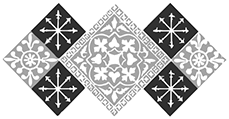Scarab
SCARAB (Lat. scarabaeus, connected with Gr. /capa/Sos) , literally a beetle, and derivatively an Egyptian symbol in the form of a beetle. The Egyptian hieroglyph O pictures a dung beetle (scarabaeus sacer), which lays its egg in a ball of dung, and may be seen on sandy slopes in hot sunshine compacting the pellet by pushing it backward uphill with its hind legs and allowing it to roll down again, eventually reaching a place of deposit. Whatever the Egyptians may have understood by its actions, they compared its pellet to the globe of the Sun. The beetle is common on both shores of the Mediterranean; the Egyptian name was kheperer, kheperi, and the sign spelt the verb khopi(r) meaning " become " and perhaps " create," also the substantive " phenomenon " or " marvel." The insect was sacred to the sun-god in his form kheperi at Heliopolis, and has been found mummified. A colossal scarabaeus of granite in the British Museum probably came from the temple of Heliopolis. The scarabaeus was much used in Egyptian religions, appearing sometimes with outstretched wings or with a ram's head and horns as the vivifying soul. It is often seen in this guise on coffins of the New Kingdom and later, when it also became the custom to place in the bandages of the mummy a large stone scarab engraved with a chapter of the Book of the Dead. This chapter, the 64th, identified the object with the heart of the deceased and conjured it not to betray him in the judgment before Osiris. A winged scarab might also be laid on the breast; and later a number of scarabs were placed about the body. These are often of hard stone and of fine workmanship. Another and even more important class of Egyptian antiquities is in the form of scarabs, pierced longitudinally for a swivel or for threading, and having the bases flat and engraved with designs. These were intended principally for seals, but might also be used as beads or ornaments. They are thus found, engraved or plain, strung on necklaces, and amethyst scarabs with plain bases are common articles of Middle Kingdom jewelry. But the employment of scarabs as seals is proved by the impressions found on sealed documents of the Middle and New Kingdom; on several occasions the impressed clay seals alone have been found hardened and preserved by the fire which had destroyed the archives themselves. The seal type of scarabaei is extremely abundant, and the designs engraved beneath them show endless variety. Some have inscriptions carefully executed, but frequently corrupted by illiterate copying until they became meaningless. The inscriptions are sometimes " mottoes " having reference to places, deities, etc., or containing words of good omen or friendly wishes, e.g. " Memphis is mighty for ever," " Ammon protecteth," " Mut give thee long life," " Bubastis grant a good New Year," " May thy name endure and a son be born thee." Such are of the New Kingdom or later. Names and titles of officials appear, most commonly in the Middle Kingdom.
Historically the most valuable class is of those which bear royal arms, ranging from Cheops of the IVth dynasty to the end of the XXVIth dynasty. Certain great kings are commemorated on scarabs of periods long subsequent to them. Thus Cheops (Khufu) may appear on an example of the latest Pharaonic age, and Tethmosis III. is found at all times after the XVIIIth dynasty. But as a rule the royal names are of contemporary workmanship, and the differences of style and pattern make it possible to group unknown kings with those who are known historically; the names of the Hyksos kings have been principally recovered from collections of scarab-seals. Scarab-shaped seals are traceable as far back as about the Vlth dynasty. They became abundant under the XHth and continued until almost the end of the native rule. As seals they took the place of the earlier cylinders. Considering the life-history of the scarabaeus and its meaning as a hieroglyph, it may well be that the scarab impressing the clay had a symbolic significance; however that may be, the oval form was well adapted for seal-stones and for the bezels of finger rings. In this situation the scarabs were often mounted with a rim of gold or silver round the edge. Rings of stone, glass or metal, with engraved bezels of the same material, and eventually Greek gem rings, gradually displaced them.
A series of exceptionally large scarabs was engraved in the reign of Amenophis III.,c. 1450 B.C., all being inscribed with his name together with that of Queen Taia and her parentage. At present five varieties are known. The simplest commemorates his queen and the north and south limits of his empire; another dated in the first year, a great battue of wild cattle; the third, the arrival of the princess Gilukhipaof Mitanni in the tenth year; the fourth (many specimens), the number of lions slain by the king down to his tenth year; the last, the cutting of the lake of Zarukhe in the eleventh year.
Egyptian scarabs were carried by trade to most of the islands and shores of the eastern Mediterranean and to Mesopotamia. The Greeks, especially in their Egyptian colony of Naucratis (q.v.), imitated them in soft paste. The finest Etruscan gems of the 6th and 5th centuries B.C. are in the form of scarabs, perhaps suggested by the Egyptian. The forgers of antiquities have carried on a brisk trade in scarabs for more than a century.
See P. E. Newberry, Scarabs (London, 1906); also art. GEM, especially for later scarabaeoid gems. (F. LL. G.)

Note - this article incorporates content from Encyclopaedia Britannica, Eleventh Edition, (1910-1911)


